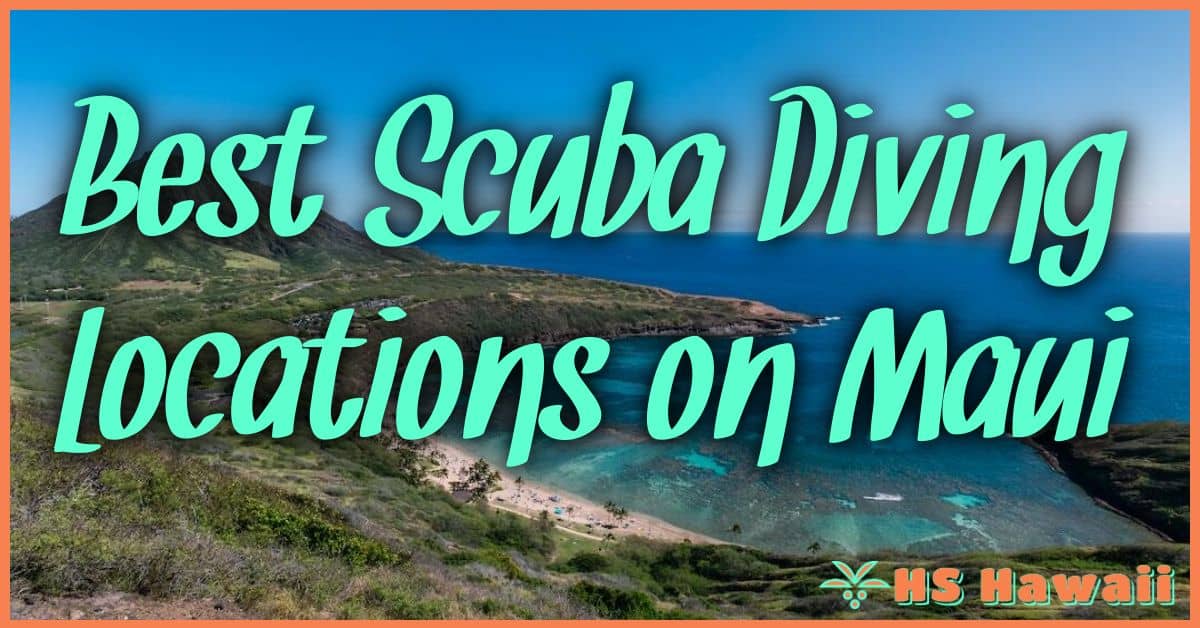Timing your vacation right can make a huge difference when visiting Hawaii. The dry season, which usually starts in May and runs through October, gives you the best weather for beach days, hiking, and sightseeing with less rain.

You get more time outdoors and fewer interruptions from bad weather.
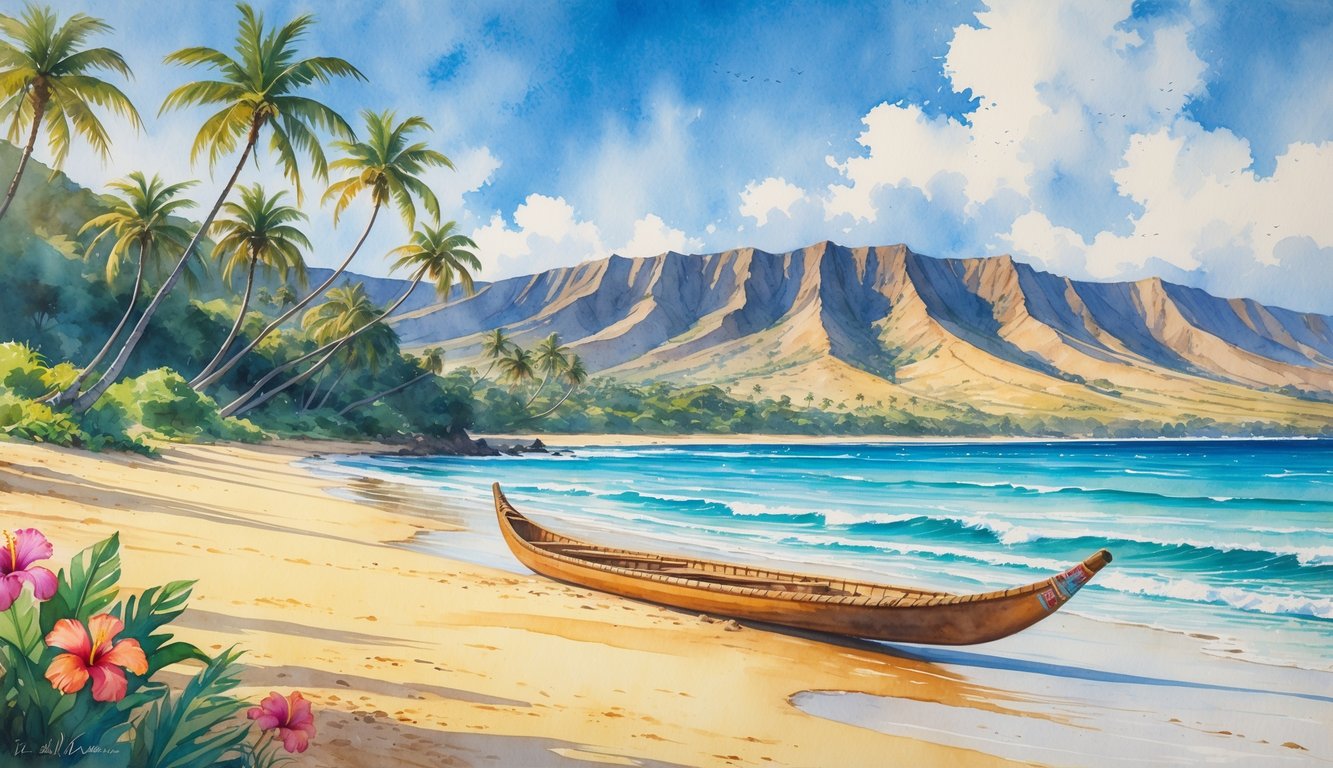
Crowds and prices in Hawaii change a lot depending on when you visit. If you plan your trip during the dry months, you’ll enjoy sunny skies and get to experience the islands at their best.
Understanding Hawaii’s dry season helps you make the most of every day. It’s the key to a more relaxing and enjoyable vacation.
Here are some easy planning tips and what to expect during this sunny time of year. Planning around the dry season is simple and makes your trip more fun.
If you want perfect beach weather and hope to avoid crowds and rain, you’re in the right place to learn how.
Understanding Hawaii’s Dry Season
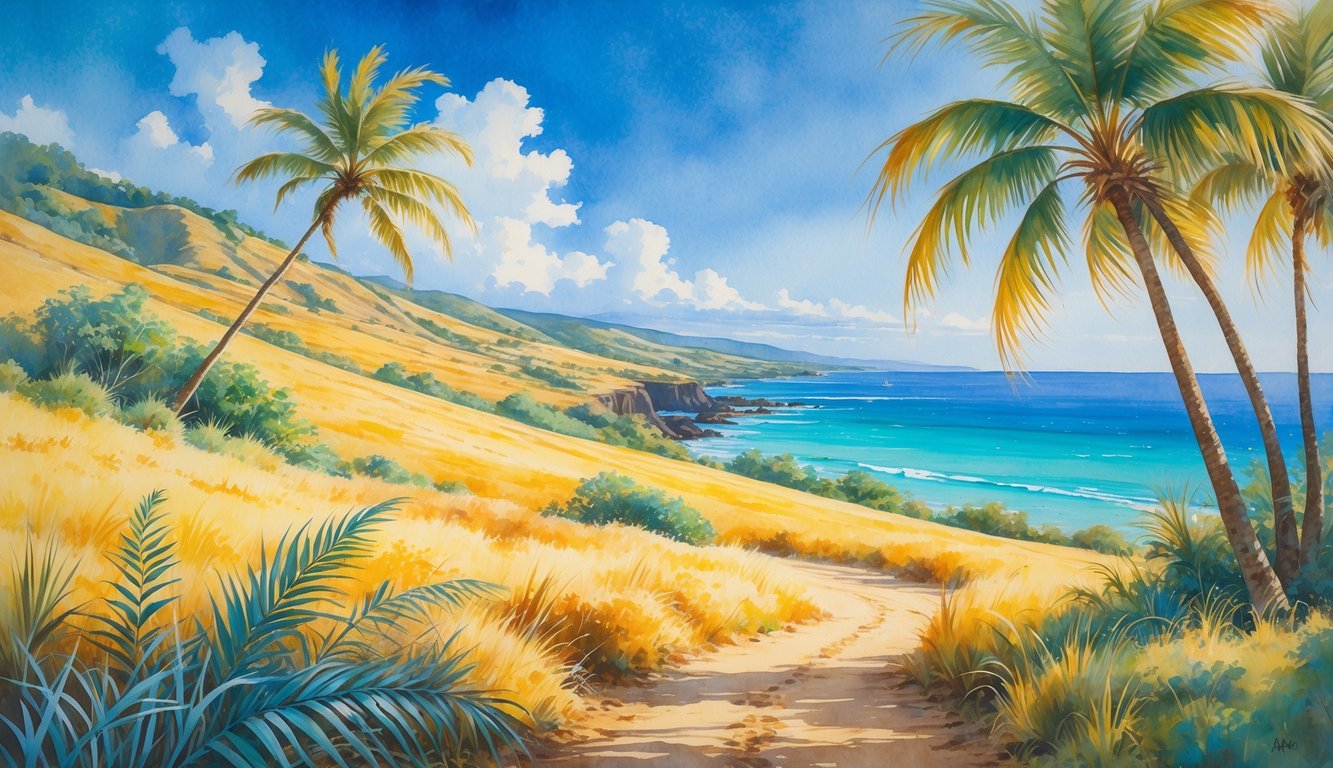
Hawaii’s dry season is a favorite time for beach lovers and outdoor adventurers. Warm temperatures, clear skies, and lower rainfall shape the experience on each of the main Hawaiian Islands.
When Is the Dry Season in Hawaii
In Hawaii, the dry season usually runs from May to October, sometimes called “Kau.” This covers late spring, all of summer, and early fall.
During this time, the weather is especially good for hiking, exploring beaches, and snorkeling. If you want lots of sunshine, these are the best months to visit Hawaii.
Rain is much less common, so outdoor activities are easier to enjoy. Humidity is lower than in the wet months, and hurricanes are rare, but it’s still smart to check the forecast.
This dry period also lines up with popular events, like the Aloha Festivals in September and October. You might notice busier tourist spots, so plan ahead if you want quieter beaches.
For a detailed look at the dry months, check resources like Kona Directory or Travel Asker.
Weather Patterns During the Dry Season
During the dry season, you’ll find daytime temperatures in the mid to high 80s F (around 29-31°C). Nights stay cooler but comfortable, rarely going below the upper 60s F.
The air feels fresh with less rain, and trade winds help keep things cool. The ocean is at its warmest, perfect for swimming or diving.
Skies are usually clear, so you get more sunshine and great views for photos or sunsets. Sometimes brief showers happen, but they’re usually quick and light.
Wildfires can sometimes be a concern because of the lack of rain, especially in drier areas. Always follow local safety tips and fire guidelines.
With mild weather, you can take longer hikes without worrying much about muddy trails.
How Dry Season Differs by Island
Each of the Hawaiian Islands experiences the dry season in its own way. On the Big Island (Hawaii Island), the west (Kona) side stays especially dry, making it popular for beach days and outdoor markets.
The east side, near Hilo, gets more rain even during summer. On Maui, the leeward (west and south) areas like Lahaina and Kihei are extra sunny and warm.
The windward (east) side, including Hana, stays a bit wetter but still drier than in winter. Oahu and Kauai have a similar pattern, with southern and western coasts (like Honolulu on Oahu and Poipu on Kauai) staying sunniest.
The north shores catch more moisture, so hikes through forests can still have some shade and light rain, even in dry season. Local microclimates make the weather in Hawaii special, so always check the forecast for the exact area you want to visit.
For more tips about seasonal changes by island, guides like HS Hawaii are helpful.
Choosing the Best Hawaiian Island for Dry Season Adventures
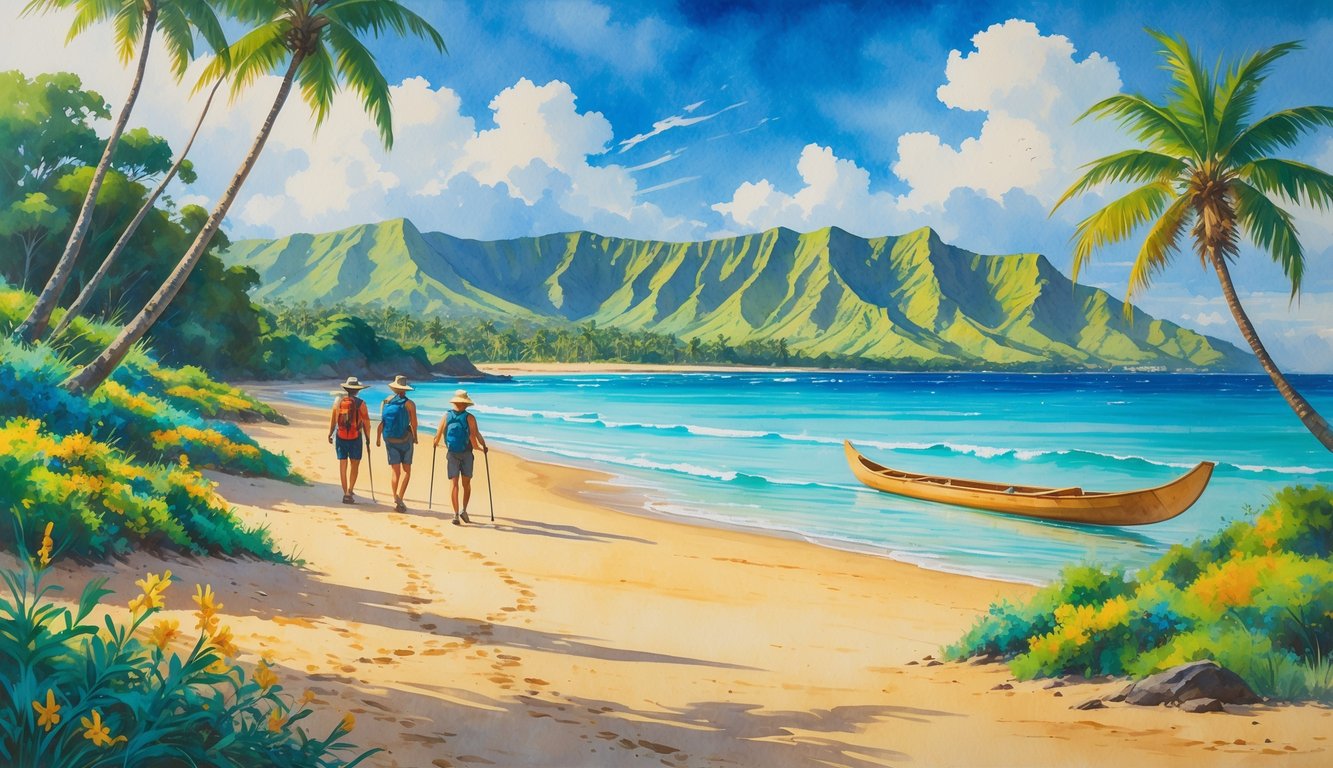
Hawaii’s dry season brings warm days, calmer seas, and fewer rainy afternoons. Weather during this time makes outdoor hikes, beach trips, and exploring easy and fun.
Each island offers its own activities, natural sights, and unique reasons to visit when skies are mostly clear.
Oahu: Honolulu and Beyond
Oahu is famous for its sunny beaches, city life, and easy access to adventure. Dry season is the best time for outdoor fun since rain usually stays away.
Waikiki Beach is perfect for surfing or relaxing on the sand. The island also has many hikes.
You can walk up Diamond Head for a great view of Honolulu, or explore easy trails like Manoa Falls. On the North Shore, dry weather brings calm waves, so snorkeling at Shark’s Cove is a good choice.
Honolulu offers shops, places to eat, and museums. Pearl Harbor and the Bishop Museum are great for learning about Hawaii’s history.
For a mix of city sights and nature, Oahu is a top pick during dry season.
Maui: Sun, Sand, and Sea
Maui has some of the best beaches for swimming and relaxing. In the dry season, Kaanapali and Wailea get lots of sun.
You can spend hours in the water or building sandcastles. The Road to Hana is a must-drive, with waterfalls, rainforests, and ocean views along the coast.
Dry weather keeps roads easy to handle and trails less muddy. You can also watch the sunrise from Haleakala volcano, where clear skies make for beautiful sunrises and sunsets.
Whale-watching season is in winter, but you may still see turtles and sometimes dolphins from the shore. Maui is great for adventure and lazy days in the sun.
It offers something for everyone. For more ideas, check this guide to picking the best Hawaiian island to visit.
Kauai: Nature Lover’s Paradise
Kauai, the Garden Isle, stays green even during the dry months. The dry season lets you explore Waimea Canyon, with wide viewpoints and hiking trails that aren’t slippery.
Beaches like Poipu get steady sun, so you can swim, snorkel, and try boogie boarding without big waves. The Na Pali Coast is perfect for boat rides and sea kayaking, especially when skies are clear.
Kauai is less crowded than other islands, so you can enjoy a quiet Hawaii vacation among cliffs and forests. If you want to spot waterfalls or explore caves, dry season keeps trails safe and streams easy to cross.
Big Island: Volcanoes and Diverse Landscapes
The Big Island is the largest, and its dry side near Kona gets a lot of sunshine. The beaches here have both white and black sand.
Kealakekua Bay is great for diving or snorkeling in clear water. Hawaii Volcanoes National Park is always worth a visit.
Dry weather means fewer road closures and easier hikes, so you can sometimes see lava flows. Waipio Valley and Mauna Kea, the tallest mountain, both offer incredible scenery.
The Big Island’s weather changes quickly because of its size. The Kona side is usually dry, while Hilo is wetter.
If you want warm days and lots of outdoor things to do, plan your Hawaii vacation around Kona during the dry season. For timing tips, this seasonal guide to visiting the Hawaiian islands can help.
Key Factors in Planning Around the Dry Season
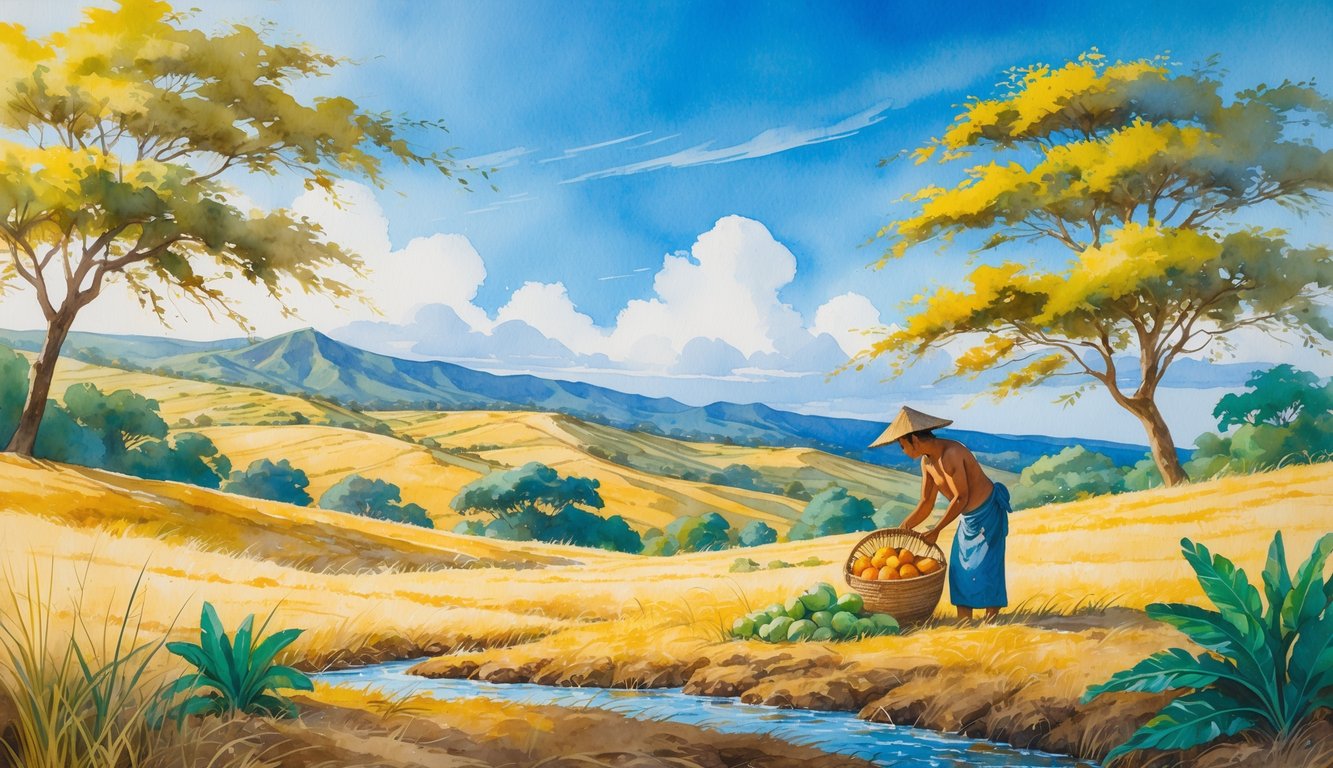
If you plan your trip during Hawaii’s dry season, you get sunny weather, warm ocean water, and less rainfall. But crowd levels and hotel prices can really affect your travel experience during this popular time.
How Crowds Change Throughout the Dry Season
The dry season in Hawaii, from April to October, brings changing numbers of visitors. June, July, and August are the busiest months, especially around school vacations.
You may find more crowded beaches and popular attractions during summer. Spring and early fall have lighter crowds, especially in April, May, September, and early October.
Big events and family vacations drive up Hawaii tourism in summer. If you want fewer people, late spring and early autumn offer a good balance between good weather and manageable crowds.
Some festivals—like the Merrie Monarch Festival in April—can make some islands busier even outside the summer rush. For a closer look at how crowds change during the year, check this month-by-month guide to Hawaii.
Peak Season Versus Shoulder Season
Hawaii’s peak season matches major U.S. holidays and school breaks, especially from mid-June to mid-August. Most visitors arrive then, so beaches, restaurants, and tours are busier.
Prices are higher and reservations fill up fast. Shoulder seasons, in April–May and September–October, bring smaller crowds but the same warm temperatures and sunny skies.
These months are a favorite time to visit because you get the benefits of the dry season with less hustle and bustle. There’s still a good energy on the islands, just without the crowds that come with peak vacation times.
For more details about how these times compare, see this local’s guide to perfect timing.
Considerations for Hotel Rates and Accommodations
Hotel and accommodation prices in Hawaii change a lot depending on the season. During peak times, especially July and August, hotel rates reach their highest—sometimes double the price of off-peak months.
Popular resorts and rental homes often sell out weeks or even months ahead. If I want to save money, I look for deals during the shoulder season.
Rates drop in May, September, and October. I find more options for rooms with ocean views or free perks like breakfast during these months.
Booking early in any season helps, but flexibility with dates is key for the best deals. There’s a helpful breakdown on accommodation prices by month here.
Here’s a quick comparison:
| Season | Crowds | Hotel Rates |
|---|---|---|
| Peak (Jun-Aug) | High | Highest |
| Shoulder (Apr-May, Sep-Oct) | Lower | Lower |
Dry Season Activities and Experiences

Hawaii’s dry season, from May to September, is a perfect time for outdoor activities. The weather brings lots of sunshine and fewer rainy days.
I enjoy more chances for adventure, water sports, and local festivals during this time.
Outdoor Adventures: Hiking, Surfing, and Water Sports
I recommend hitting the trails during the dry season. Popular hikes like Diamond Head on Oahu or the Kalalau Trail on Kauai are less muddy and more enjoyable when the weather is dry.
I can pack lighter since I don’t need heavy rain gear. Surfing is best on the south shore from May through September because of steady south swells.
Beginners like me feel comfortable with smaller waves, while advanced surfers can try breaks like Ala Moana Bowls. Kayaking and paddleboarding are safer during this season.
The ocean is usually calmer and clearer, and gentle trade winds help me stay cool. I pay attention to lifeguard warnings, but overall, conditions make these activities easy and fun.
Snorkeling and Diving Opportunities
Dry season means clearer water for snorkeling and diving. Top spots like Hanauma Bay on Oahu and Molokini Crater near Maui offer great visibility.
I can easily see colorful fish, sea turtles, and coral reefs. Scuba diving also improves during these months.
Sites like the Cathedrals in Lanai or the Manta Ray night dive off Kona are safe and full of life. Most tours offer rentals and guidance, so beginners can try it too.
I always check local regulations, since some marine areas have specific rules or protected zones. The dry season’s calm seas give me reliable access to the best locations.
Festivals and Cultural Events
Many Hawaiian festivals happen during the dry season. In June, I experience the King Kamehameha Day celebrations, which include a floral parade, hula, and community gatherings.
I enjoy attending the Waimea Town Celebration in May, which highlights Kauai’s heritage with music, food, and traditional games. Honolulu hosts the Honolulu Festival and the Hawaii International Film Festival, blending Hawaiian culture with international arts.
Other events like Lei Day, Merrie Monarch Festival, and the Kona Coffee Cultural Festival let me dive deeper into Hawaiian traditions. I look forward to the Honolulu Marathon each December to wrap up the season with a big community event.
Essential Weather and Safety Tips for Travelers
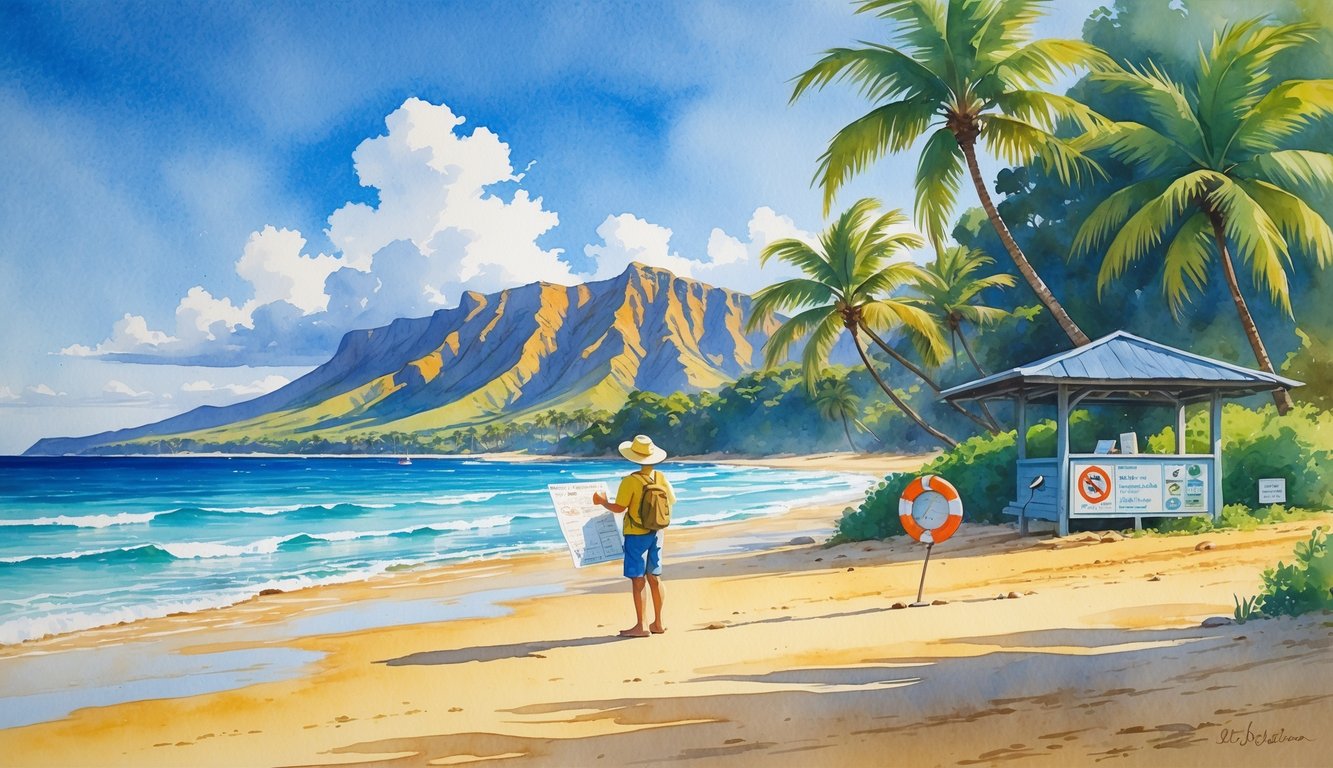
I always pay close attention to the weather in Hawaii to keep my trip safe and comfortable. Knowing about trade winds, hurricane season, and the difference between dry and wet seasons helps me plan better.
Trade Winds and Their Effect on Travel
Trade winds blow steadily from the northeast for much of the year in Hawaii. These winds shape the islands’ weather.
The windward side (facing the wind) often gets more moisture and showers, while the leeward side stays drier and sunnier. The trade winds help cool the islands and keep the air fresh, especially during the dry season.
This makes hiking and outdoor activities more comfortable for me. Strong trade winds can make ocean conditions rough, so I stay careful when swimming or surfing—especially on windward beaches.
If these winds pause or change, the weather gets warmer and muggy. I check the daily wind forecast during my trip to pick the best days for water activities.
For more guidance on planning with weather in mind, I read travel safety tips in this Hawaii safety guide.
Understanding Hurricane Season
Hawaii’s hurricane season runs from June through November each year. While hurricanes are rare, tropical storms can happen and bring heavy rains or strong winds.
I check weather updates and alerts daily during this time. When I travel in hurricane season, I consider travel insurance for extra protection in case I need to change plans.
I pack emergency essentials like a flashlight, battery charger, snacks, and bottled water. I avoid risky hikes and watch ocean conditions, as surf can be high even on calmer leeward sides.
If I plan outdoor activities in late summer or early fall, I keep an eye on official channels like the National Weather Service. This helps me avoid risks from sudden storms.
For more on how to stay prepared, I use this Hawaii travel safety guide.
Comparing Dry Season and Wet Season
Hawaii’s dry season, called “ka wela,” usually lasts from April through October. During these months, I enjoy more sunny, stable weather—perfect for beach days, hiking, and sightseeing.
Rain is less common, especially on the leeward sides and lower elevations. The wet season arrives between November and March, bringing heavier and more frequent rain, especially on the windward slopes and higher elevations.
This season can bring sudden winter storms and muddy trails. I always tell someone when I go hiking and stay prepared for quick changes in weather.
Knowing the differences between dry and wet seasons helps me plan activities like swimming, snorkeling, and hiking at the right spots and times. For more tips, I use resources like these Hawaii travel tips to stay informed.
Month-by-Month Dry Season Planning
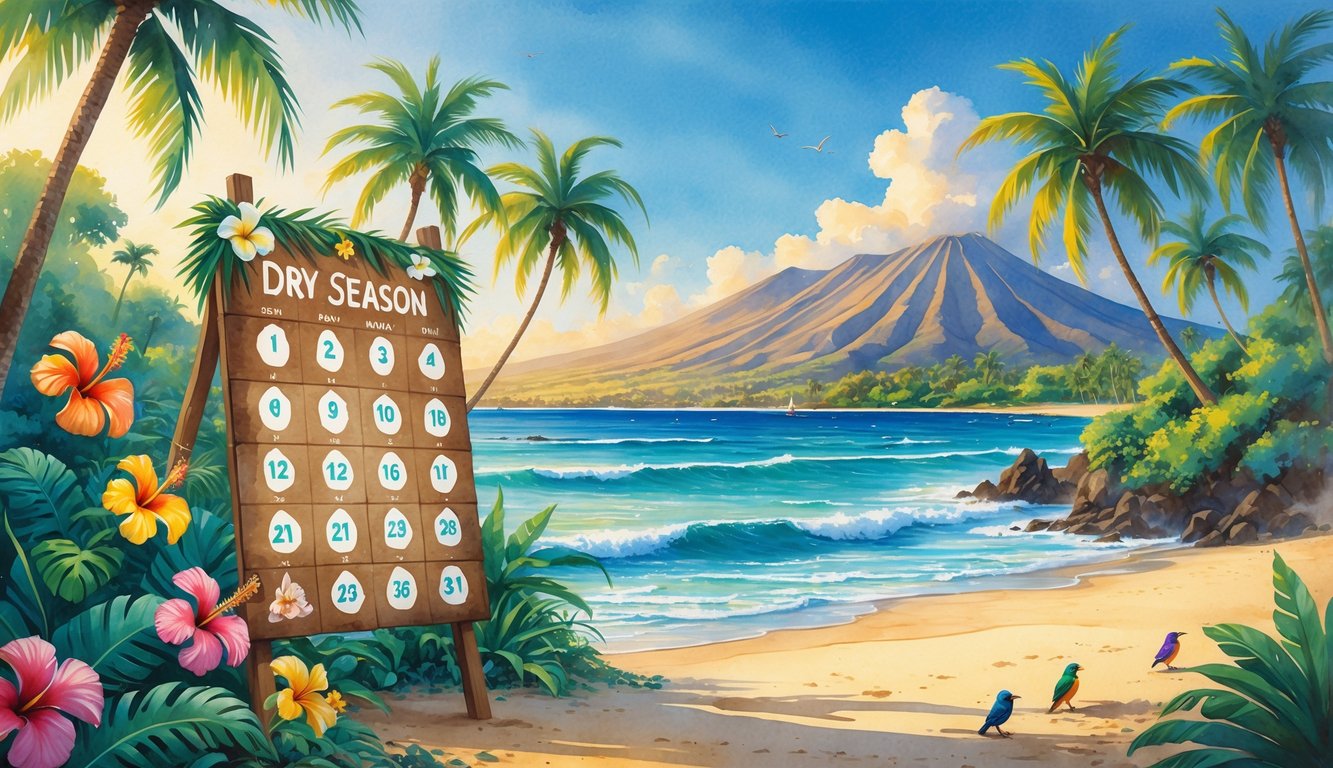
Knowing when Hawaii’s dry season happens helps me pick the best time for my trip. Lower chances of rain, more sunny days, and special events make a big difference in my experience.
September: Start of the Dry Season
September marks the start of the dry season. This month offers warm temperatures and fewer crowds.
Average highs stay near 87°F (31°C), and rain is rare, so outdoor plans usually go smoothly. I can swim, hike, and explore beaches without heavy rainfall.
Since September follows summer vacation, flights and hotel prices often drop, which helps my budget. It also feels less busy as many families finish their summer trips.
Many outdoor tours are in full swing, and the ocean stays calm for snorkeling and paddleboarding. Prices for activities can be lower too as businesses try to fill spots during the shoulder season.
October: Transition and Events
October sits at the end of Hawaii’s dry season. Temperatures stay comfortable, with average highs around 80°F (27°C).
Rainfall increases a bit compared to September but usually doesn’t cause problems, especially early in the month. October gives me a good mix of quiet beaches and fun festivals.
The Aloha Festivals often happen at this time, with parades, music, and traditional Hawaiian food. This is a great chance to experience culture with fewer tourists.
Since it’s a transition month, I watch for occasional showers. Still, I usually find the weather perfect for hiking and sightseeing with less humidity than summer.
Summer Months Highlights
June, July, and August are the heart of the dry season. These months have very little rain and long, sunny days.
Daytime temperatures stay between 85°F and 88°F, according to monthly weather patterns in Hawaii. These months are perfect for beach activities and water sports.
The ocean is calm, making it safe for families and less-experienced swimmers. Popular areas like Waikiki and Maui’s beaches get crowded, since summer is a peak travel time.
I recommend booking hotels and flights early if I want to visit in the summer. Summer also brings cultural celebrations and outdoor concerts.
Even though prices are highest, I enjoy the energetic atmosphere and great weather during this vibrant time in Hawaii.
Travel Tips for Making the Most of Hawaii’s Dry Season
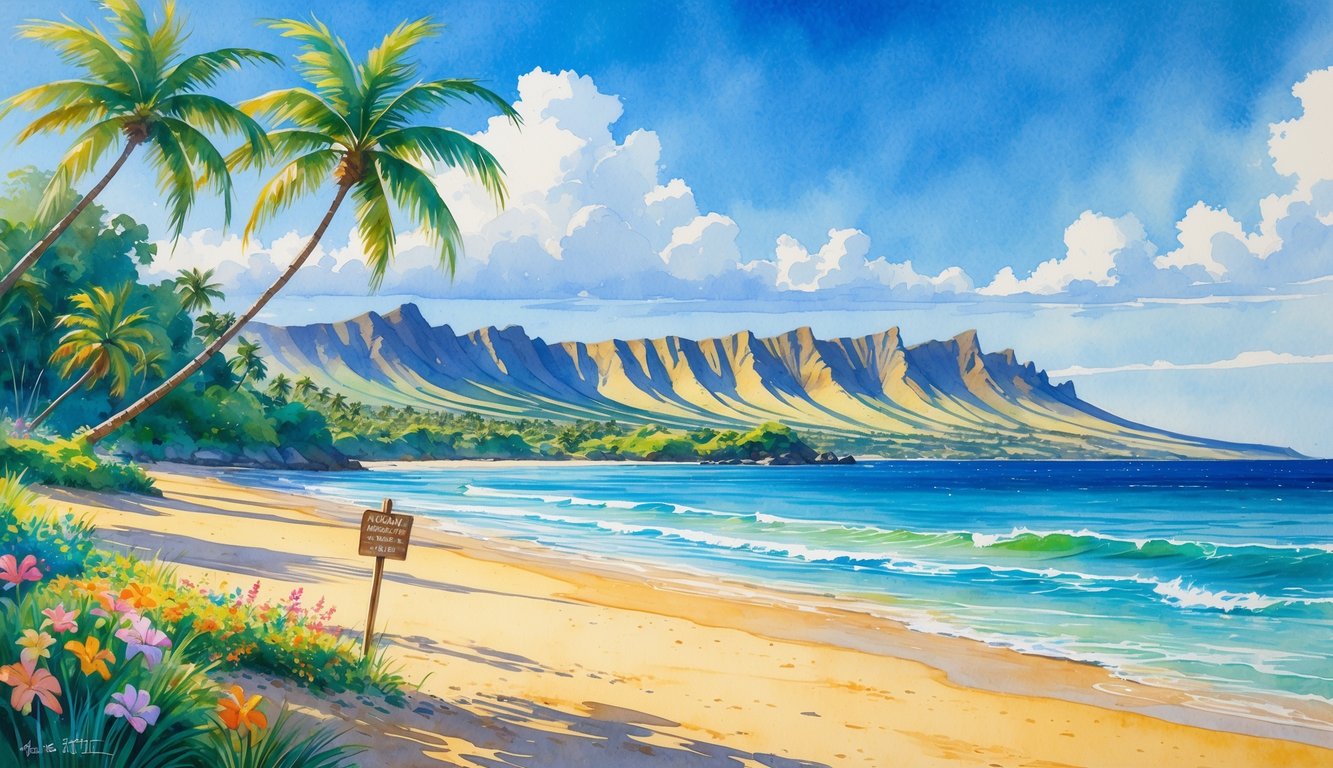
Planning ahead helps me enjoy Hawaii’s dry season. Choosing the right place to stay, packing for the weather, and respecting local culture make my trip smooth and memorable.
Booking Accommodations Early
Hawaii’s dry season, usually from April to October, attracts many travelers. Hotels and vacation rentals fill up fast, especially near beaches and famous attractions.
When I plan my Hawaii trip, I book my room several months in advance for the best prices and locations. Comparing options across the islands is useful, as Oahu, Maui, Kauai, and the Big Island all offer unique experiences.
I use trusted travel sites or local property managers for good deals and accurate listings. Choosing places with air conditioning or strong fans keeps me cool during warmer nights.
Booking early gives me a better choice of amenities. If I want a pool, free breakfast, or ocean views, booking soon after I decide to visit is key.
I always double-check cancellation policies, as weather and travel plans can change.
Packing Essentials for Warm Weather
Dry season in Hawaii means sunny days, warm temperatures, and little rain. I pack comfortable, light clothes like shorts, t-shirts, sundresses, and swimwear.
Breathable fabrics such as cotton or linen keep me cool while exploring. I use sunscreen with strong SPF, a wide-brimmed hat, and sunglasses to protect myself from UV rays.
Insect repellent helps in the evenings, especially near gardens or water. I bring a reusable water bottle to stay hydrated and reduce plastic waste.
I pack flip-flops for the beach and sturdy shoes for hikes. A light jacket is smart for cooler evenings or higher elevations.
I use a checklist to make sure I don’t forget anything.
Sustainable Travel and Local Etiquette
Respecting the islands and their people is important for any visitor to Hawaii. I use reef-safe sunscreen to help protect coral reefs.
I support local businesses, such as family-owned restaurants and shops. I avoid relying only on large hotel chains.
Learning a few Hawaiian words like “aloha” and “mahalo” helps me connect with residents. This also shows respect.
I stay on marked trails when I walk or hike. This protects native plants and wildlife.
I take only photos and never remove rocks, shells, or sand. This helps keep the islands healthy and beautiful.
I follow posted rules at beaches and parks. Staying quiet and kind, even when places are busy, helps me appreciate Hawaii’s friendly spirit.
Seasonal Wildlife and Natural Wonders
During Hawaii’s dry season, I see a unique mix of wildlife and vibrant natural sights. Rare plant blooms and marine life make each visit special.
Whale Watching in Hawaii
Each year, thousands of humpback whales migrate from Alaska to Hawaii. They arrive in late fall and stay through early spring, with peak sightings in January and February.
The dry season runs from April to October. Whale watching is best from November to March.
I head to the coastlines of Maui or the Big Island for great viewing. Whales often breach and play near the shore.
The best way to see whales up close is by joining a guided boat tour.
I sometimes spot dolphins and the endangered Hawaiian monk seal at protected parks. For bird watching, places like Kaʻena Point are known for rare seabirds during the nesting season, which continues into late spring.
You can learn more about viewing wildlife in Hawaii at state parks.
Flora and Fauna Unique to the Dry Season
The dry season transforms Hawaii’s landscape. Different flowers and wildlife appear during this time.
I see fewer waterfalls. Trails and grottos become easier to access because there is less mud and rainfall.
Some native plants, such as the silversword and the Hawaiian ilima flower, bloom mainly during drier months. You can spot these plants on open hillsides and volcanic slopes.
Rare birds, insects, and tree snails live in the dry forests. Many of these species exist only in Hawaii.
Some areas turn brown during the dry season. Higher elevations and shaded valleys stay green and lush.
Hiking trails become safer and less slippery. This makes it a good time to explore nature and wildlife on O‘ahu and other islands.
I look for bright hibiscus, frangipani, and native ferns thriving in the sunshine.


